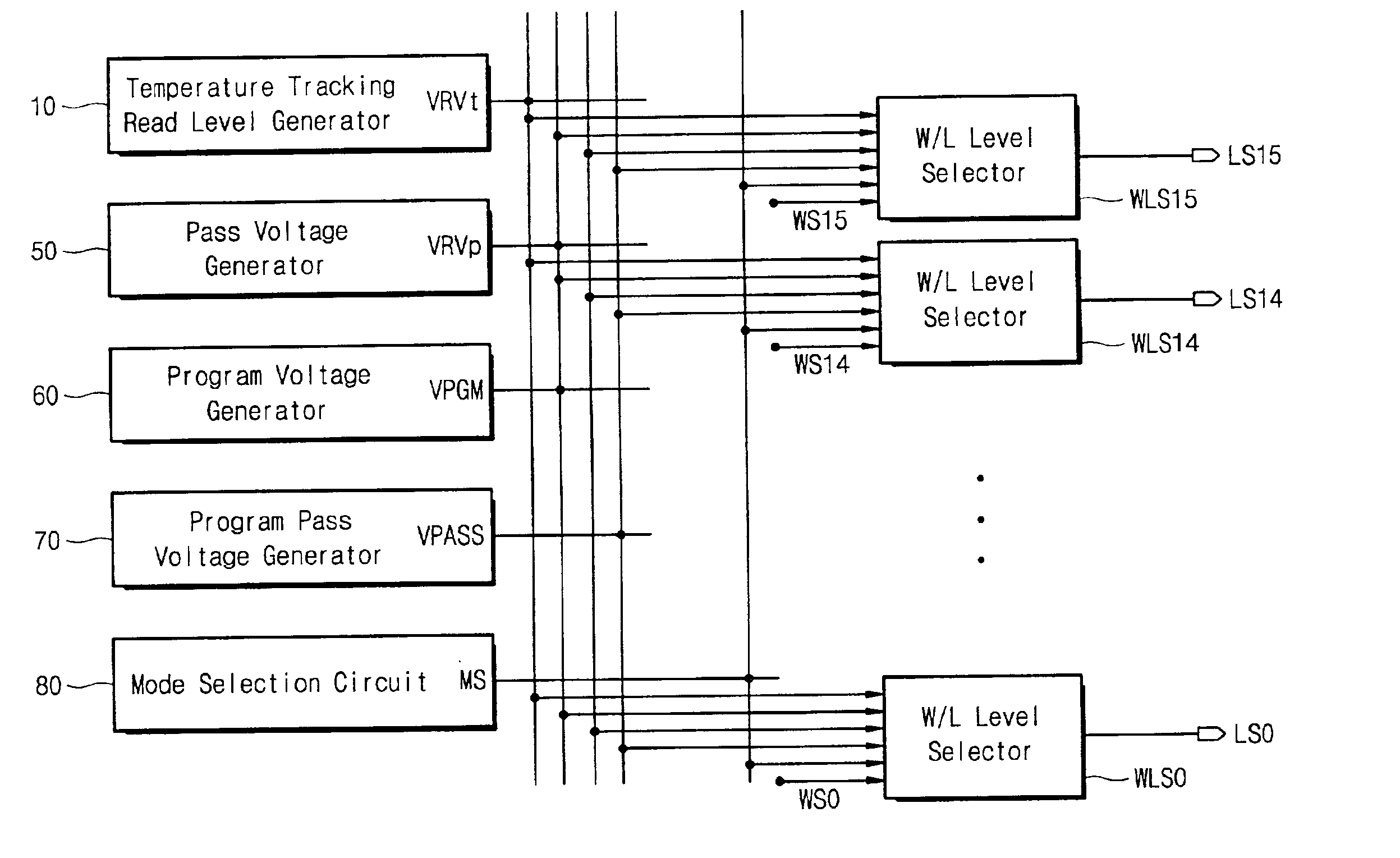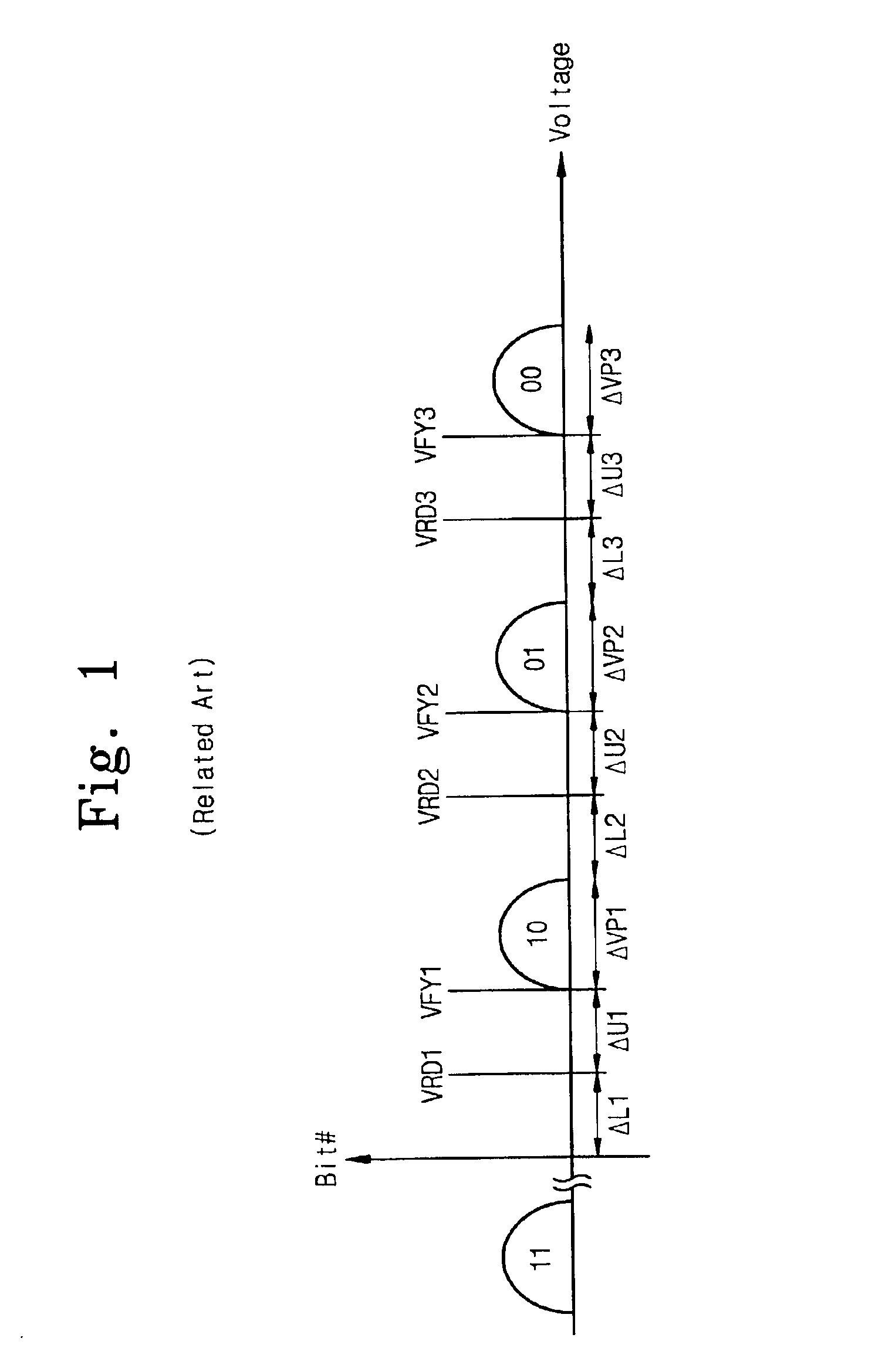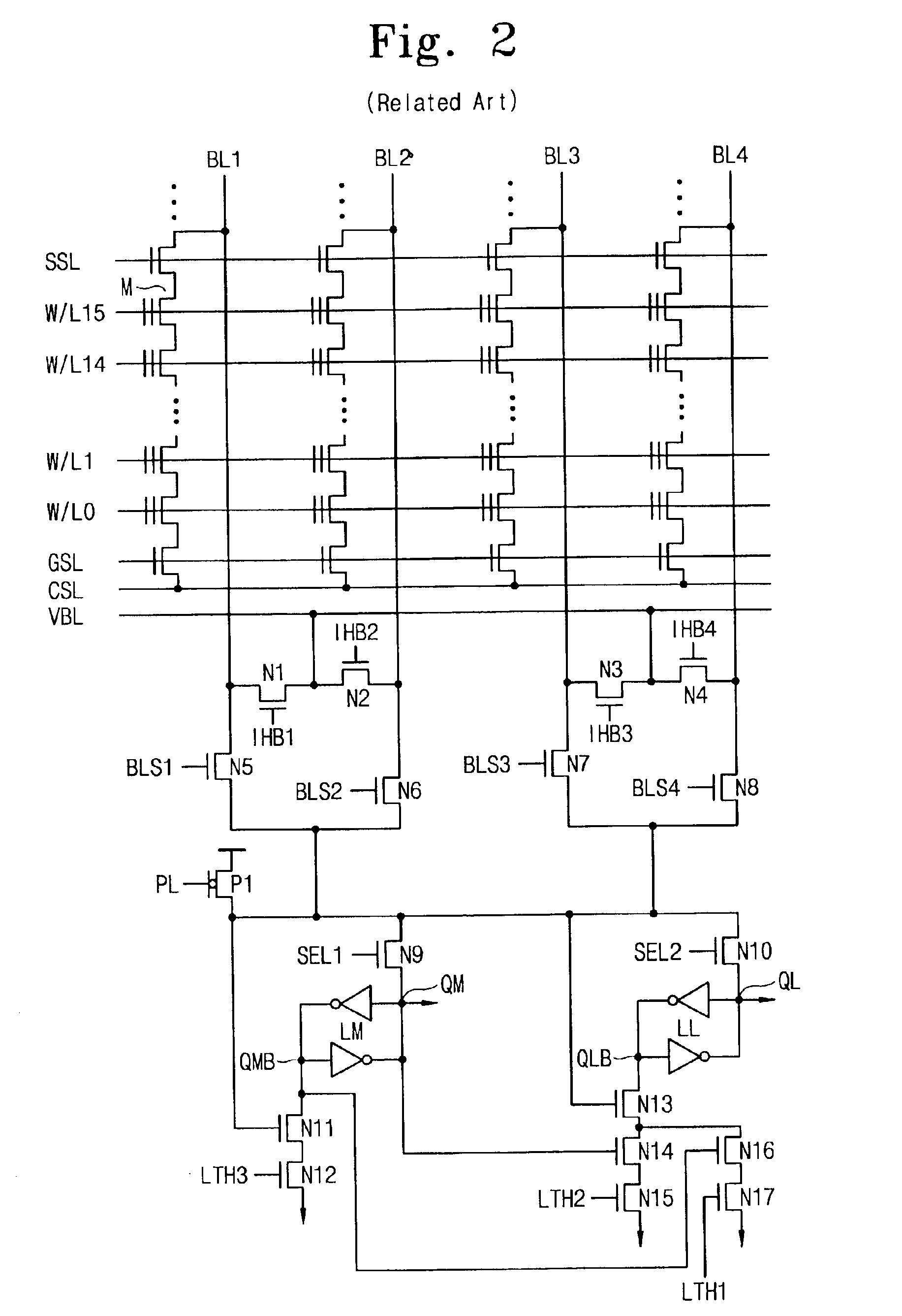Multi-level flash memory with temperature compensation
a flash memory and temperature compensation technology, applied in the field of flash memory devices, can solve the problems of affecting the reliability of data states, and sensitive threshold voltage profiles of flash memory,
- Summary
- Abstract
- Description
- Claims
- Application Information
AI Technical Summary
Benefits of technology
Problems solved by technology
Method used
Image
Examples
Embodiment Construction
Various embodiments of the invention will now be explained with reference to FIGS. 5 through 11. It should be understood, however, that the following description of preferred embodiments is illustrative only, and should not be taken in a limiting sense. Although specific details are set forth in order to provide a more thorough understanding of the principles of the present invention, it will be apparent to those skilled in the art that those principles may be practiced in any of a number of different ways.
In general, a NAND-type multi-level flash memory includes a memory cell array having a plurality of memory cells. Each of the memory cells can be set in one of four, two-bit data states (i.e., “11”, “10”, “01”, or “00”). Peripheral circuits load data into and sense data from the memory cells. Each memory cell has floating and control gates that are isolated from each other by an insulation film, as well as source and drain regions that are formed in a semiconductor substrate. Eras...
PUM
 Login to View More
Login to View More Abstract
Description
Claims
Application Information
 Login to View More
Login to View More - R&D
- Intellectual Property
- Life Sciences
- Materials
- Tech Scout
- Unparalleled Data Quality
- Higher Quality Content
- 60% Fewer Hallucinations
Browse by: Latest US Patents, China's latest patents, Technical Efficacy Thesaurus, Application Domain, Technology Topic, Popular Technical Reports.
© 2025 PatSnap. All rights reserved.Legal|Privacy policy|Modern Slavery Act Transparency Statement|Sitemap|About US| Contact US: help@patsnap.com



